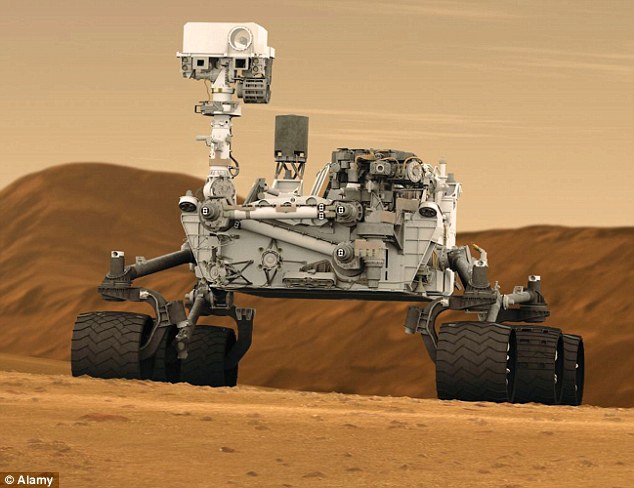
NASA fears they could lose contact with the multi million dollar Mars Rover when it touches down in August. sources suggest plans are in place by NASA boffins to deal with everything from flat battery, an electrical fail and even being taken by Aliens.
The fact that NASA has such plans should open up a real conspiracy theory outburst. However the bigger issue now is they could lose contact before it lands.
NASA could lose touch with its latest Mars rover just as it attempts to land on the red planet on 6 August. The Curiosity vehicle, which is the size of a car, is aiming for a deep depression known as Gale Crater.
The US space agency will be tracking the descent with satellites, but today admitted its key craft could be in the wrong place.
Engineers have been tackling a fault on the Odyssey satellite and it is no longer in the best observational orbit.

The team are now in a frantic race to move it back in the next three weeks, or Nasa will lose signal to the rover just as it is about to touch down.
Engineers today tried to play down the gaffe, claiming it will not affect the outcome of the landing because Curiosity’s descent manoeuvres are all performed automatically.
‘Odyssey right now looks like it may not be in the same spot that we’d expected it to be,’ said Doug McCuistion, the director of Nasa’s Mars exploration programme.
‘There may be some changes in real-time communication. We’ll let you know as this develops; we still have more work to do. But keep in mind, there is no risk to [Curiosity] landing. It does not have an effect on that.’

A recent study suggested that just digging inches beneath the surface could uncover complex organic molecules that could show that life once existed on Mars.
The rover, in a protective capsule, will hit the top of the Martian atmosphere at 20,000km/h (13,000mph) and attempt to slow to just one metre per second to execute a soft touchdown.
The landing system includes a supersonic parachute and a rocket-powered crane.
It was expected that the Odyssey orbiter would track the whole descent, relaying UHF signals from the rover right up to the landing and for a few minutes beyond.
The scoop on Curiosity, which is due to arrive on Mars in August, will dig four inches beneath the surface – enough to find the complex building blocks of life, particularly in new craters excavated by recent asteroid impacts.
Some scientists such as Jay Melosh of Purdue University believe that life may even have originated on Mars, then been carried to Earth on asteroids.
Stick a shovel in the ground and scoop. That’s about how deep scientists need to go in order to find evidence for ancient life on Mars, if there is any to be found, a new study suggests.
The results suggest that, should Mars harbor simple organic molecules, NASA’s prospects for discovering them during Curiosity’s explorations are better than previously thought, said Alexander Pavlov of the NASA Goddard Space Flight Center in Greenbelt, Maryland, lead author of the study.
Complex organic molecules could hint more strongly at the possibility of past life on the planet. These molecules, made up of 10 or more carbon atoms, could resemble known building blocks of life such as the amino acids that make up proteins.

![mars-rover[1]](https://coolinterestingnews.com/wp-content/uploads/2012/07/mars-rover1.jpg)












